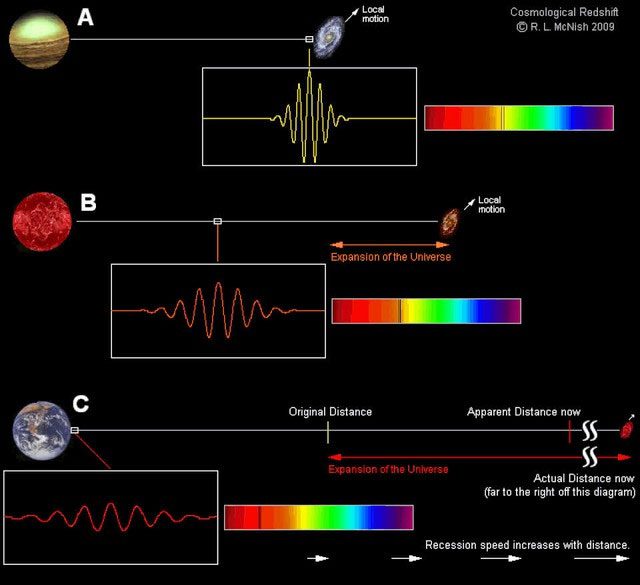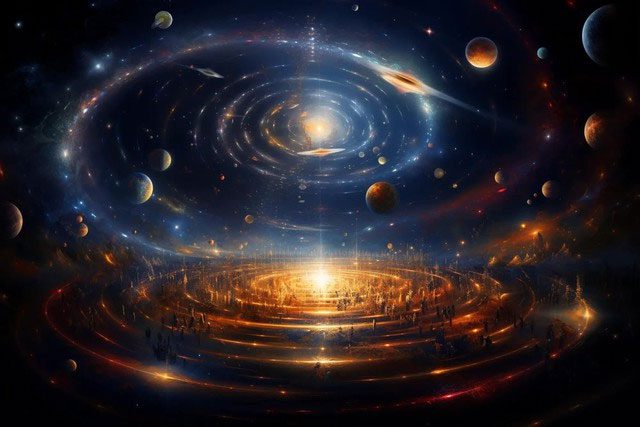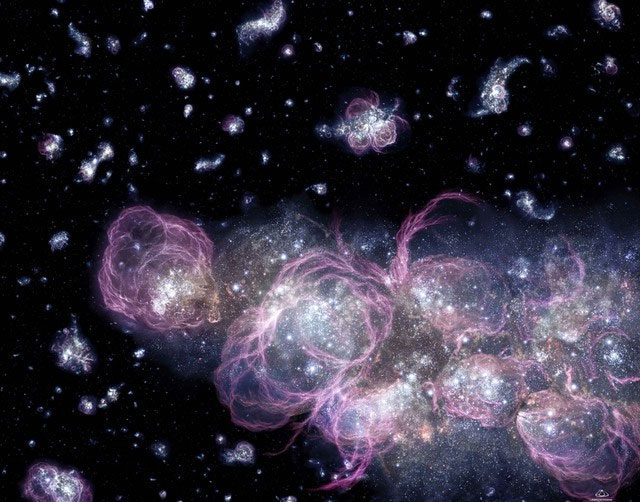Is there something wrong with the Big Bang theory, or is the theory of relativity itself flawed?
The Age and Size of the Universe
Before embarking on a journey to explore the mysteries of the universe, we need to understand its age and size. This forms the foundation for understanding the expansion of the universe and the phenomenon of faster-than-light travel. The age of the universe is estimated by observing cosmic microwave background radiation.
The cosmic microwave background radiation is left over from the Big Bang and permeates every corner of the universe. By analyzing the subtle temperature fluctuations in this radiation, scientists can trace the history of the universe and estimate that it is approximately 13.8 billion years old. However, the size of the universe exceeds our intuition. As the universe continues to expand, space itself is also expanding, allowing light to travel greater distances in the history of the universe than its actual age would suggest.

The age of the universe is estimated by observing cosmic microwave background radiation. (Illustrative image).
Therefore, although the universe is 13.8 billion years old, the diameter of the observable universe reaches an astonishing 93 billion light-years. One of the direct pieces of evidence for the expansion of the universe is Hubble’s law, which reveals a simple yet profound truth: the farther away galaxies are from us, the faster they are moving away. This recession velocity can be measured by observing the redshift phenomenon.
Redshift refers to the phenomenon where the wavelength of electromagnetic radiation from an object increases for some reason. It is a direct result of the expansion of the universe. In addition to redshift, scientists also observe the expansion of the universe through other methods, such as detailed observations of distant galaxies that reveal how the rate of expansion of the universe changes over time. These observations help scientists construct more accurate cosmological models and lead to concepts of dark matter and dark energy, which are invisible yet crucial components of the universe.

The farther away galaxies are from us, the faster they are moving away. (Illustrative image).
The Theory of Relativity and the Expansion of the Universe
Einstein’s theory of relativity is one of the cornerstones of modern physics. It consists of two parts: special relativity and general relativity. Special relativity proposes the concept of the speed of light as a constant speed, while general relativity considers gravity as the curvature of spacetime caused by matter.
One of the most famous conclusions of relativity is that no object with rest mass can reach or exceed the speed of light. This is because, as an object’s speed approaches the speed of light, its mass would need to become infinite, and the energy required to accelerate it would also be infinite.
However, the expansion of the universe does not pertain to the motion of matter through space but rather the expansion of space itself. This means that galaxies are not moving through space at speeds faster than light; rather, they are being carried along by the expansion of space. Therefore, the expansion of the universe does not violate the speed limit set by light in relativity.
To illustrate this, consider drawing several points at a certain distance apart with a marker on an uninflated balloon, with these points representing galaxies in the universe. When the balloon is not inflated, all the points are relatively close together. But as you begin to inflate the balloon, you will notice that the distance between the points starts to increase.

As the balloon expands, the points on its surface increase in distance from each other. (Illustrative image).
Note that the points themselves are not moving; their relative positions remain unchanged. In this model, the surface of the balloon represents two-dimensional space akin to our three-dimensional space. As the balloon expands, the distances between the points increase. This is not because the points are moving across the surface but because the entire surface is expanding. Of course, this model is a simple metaphor. The universe is not two-dimensional but three-dimensional, and its expansion may be more complex than the surface of a balloon. However, this model provides a visual way to grasp the basic concept of the expansion of the universe. In the balloon model, if the balloon expands infinitely, the distance between the points will increase at an infinite rate. In the actual universe, due to the expansion of space, the distance between galaxies can increase faster than the speed of light, and this does not violate the principle of relativity, because relativity “does not allow” matter to exceed the speed of light, but space can.

In the universe, the distance between galaxies can increase faster than the speed of light, which does not violate the principle of relativity. (Illustrative image).
Deeper Implications of the Expansion of the Universe
The expansion of the universe is not just an observable phenomenon; it challenges our physical laws and compels us to rethink the nature of mass, energy, time, and space. As space can expand infinitely, an important question arises: do our physical laws need to adapt to this infinite framework?
Research into the expansion of the universe has also led to concepts of dark matter and dark energy. These are forms of matter and energy that we cannot directly observe, but through their effects on the expansion of the universe, we know they make up a significant portion of the total energy in the universe.
Dark matter influences the rotation speeds of galaxies and the movement of galaxy clusters through gravitational effects, while dark energy is the mysterious force driving the accelerated expansion of the universe. How they interact with the expansion of the universe and the nature of these entities is one of the most exciting fields of research in modern physics. The expansion of the universe also poses challenges to our future observations and theories.

Dark matter influences the rotation speeds of galaxies. (Illustrative image).
As the universe continues to expand, distant galaxies will increasingly move away from us and may eventually fall beyond our observational reach. This means we may lose the window into the early history of the universe, thus limiting our understanding of the ultimate fate of the universe. Although the expansion of the universe is widely accepted as a fundamental reality of cosmology, the exact mechanisms behind it remain largely unknown.


















































